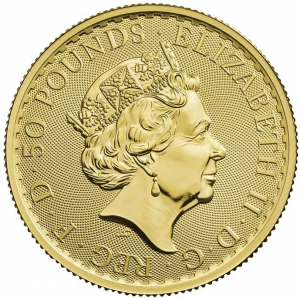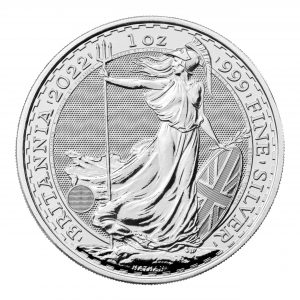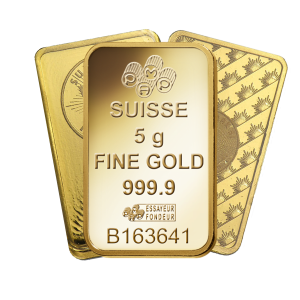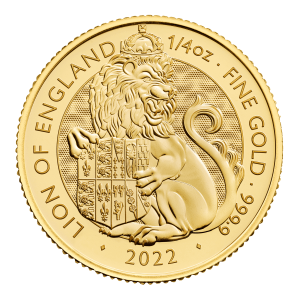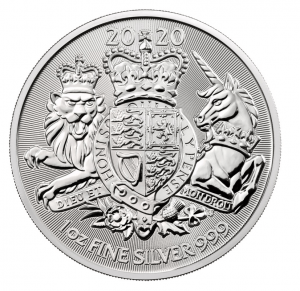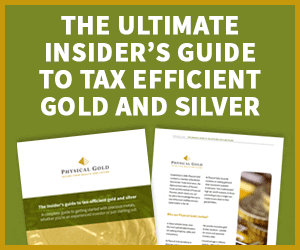
Did you know that not all gold and silver performs the same? Your choice of dealer can directly impact the returns on your investment. So, what should you look for in a gold or silver dealer? In this short video, we explain why we’re one of the UK’s leading precious metal dealers and how we’re uniquely suited to help with your requirements, whether you’re an experienced investor, or just starting out.
Gold & Silver Dealer
Choosing the right gold or silver dealer can make all the difference, both when it comes to credibility & reassurance and also when assessing vital elements that can affect your investment return, such as coin selection & tax.
Physical Gold make it easy for you to purchase gold and silver; whether you want to make a one-off investment or prefer saving a regular amount, month-by-month for the future.
As industry leading, BNTA accredited gold-investment professionals, we specialise in helping both experienced investors – looking for gold and silver diversification, as well as those looking for the very first time, to own some gold of their own
We offer access to unique gold investment solutions, some of which are not available anywhere else, such as:
- Regular gold savings
- Silver bars and coins
- Tax-free gold
- (and even) Gold for your pension
With a dedicated consultant to discuss your aims and objectives for your wealth and future, we’ll suggest the most appropriate options for you, bearing in mind the all important considerations around tax-efficiency.
Because of our industry reputation & size, we have significant buying power, which enables us to negotiate the best prices for you as an individual, before organising the purchase on your behalf.
We can then either securely store and insure the gold for you or simply send the gold, safely insured, directly to your door.
When the time comes to sell your gold, we even guarantee that we will buy it back from you, meaning you never have to worry about how liquid your investment is.
As an accredited business, with unique investment solutions, offering dedicated consultants and a buy back guarantee, investing in gold & silver has never been easier, more secure or more suited to you than with Physical Gold.
Contact us at www.physicalgold.com/contact or call 020 7060 9992.

Financial New Year Health Check
A New Year health check is top of most people’s priorities in January. It’s the time of year where we take a look at our waistlines and consider dusting off the treadmill and the dumbbells! Most of us are adept at making personal health resolutions (though, perhaps not so good at keeping them) when, perhaps we should also be reviewing our financial health….
The momentum of a new year should be harnessed to re-appraise your finances, and assess your investment and savings plans for the future. Maybe you could do with saving a little more, or perhaps this is the year to rebalance your pension? If you assess your financial situation, you’ll establish where you can make small changes to optimise your assets.
Annual reviews are common in financial services, as twelve months may have seen drastic changes to your income, and your investments may have gone up or down. An annual check helps you reassess your own personal plans and take appropriate action.
If you don’t currently own any gold or silver, the new year is a good time to make enquiries into purchasing some and protecting your other assets. Gold and silver prices are currently at a 6 year low, so if your portfolio could benefit from some balance, now is a great time to make that change.
Ongoing market turbulence
A slowdown in the Chinese economy and ongoing terror alerts, are threats which could increase the volatility of equity and property-heavy portfolios in 2016. Protecting against these threats, with gold or silver, is considered by experts as a sound investment strategy, as they provide balance to a mixed portfolio of assets.
If you already hold precious metals as part of your portfolio, it may be wise to review your holding, relative to your other assets. You may wish to increase your percentage of gold or silver, to protect your other assets from sharp market falls.
The optimum ratio of gold or silver to hold in your portfolio of investments, will vary according to the individual and the market conditions. Frequently reviewing this is key to success. Reviewing and rebalancing on a regular basis ensures your ratio is optimised, and is good investment practice, as the value of all investments will rise and fall over time.
If you’re considering getting into shape this new year, I’m afraid we can’t offer treadmills or dumbbells, but we can help with the financial shape of your New Year health and offer assistance with gold and silver. We provide tax-efficient ways of adding these to your portfolio, whether it’s your pension, nest-egg or regular savings.
You can contact us via any of the methods listed here, or if you would like to know a little more about investing in gold and silver, you can download our guide here.
Hollywood Gold
When it comes to fictitious piles of the yellow metal, you can’t beat Hollywood Gold stories and films, involving huge stacks of bars and roomfuls of coins!
In the 1964 James Bond film Goldfinger, Bond comes up against a villain obsessed with gold. With Bond never going out of fashion – and Physical Gold’s obvious interest in all things gold – we decided to do some research. Just how much gold did Auric Goldfinger try to get away with and was his heist set to be the largest return ever seen on screen?
Armed with the essentials of a comfortable chair, a big TV and a Vodka Martini (shaken, not stirred), we set out to investigate the silver screen’s biggest Hollywood gold heists. Just exactly how much has gold starred in popular films over the years and how does fiction compare to the facts?
Fort Knox Gold
The popular gold trivia question “How much gold is in Fort Knox?” is answered by James Bond in the film Goldfinger, where the figure was 15 billion dollars. Those who know the film remember that the villain’s plan is to blow up and destroy the gold, thus increasing the worth of his own personal gold holding. Needless to say, our hero Bond, in the finale, dramatically foils him. Perhaps Goldfinger should have waited as a 2016 count estimated the value of Fort Knox’ gold at $180 billion!
Gold Treasure
Gold Treasure is a popular narrative in Hollywood movies and the memorable opening of Indiana Jones And The Raiders Of The Lost Ark sees our treasure hunting hero making off with gold in the form of a small statue – a Golden idol – which rests on a booby-trapped pedestal. The weight of the Idol is approximately 3 pounds, which counterbalances a trigger to make the temple collapse. The Gold Idol in the film was, of course, a prop, rather than real gold, but had it been solid, it would have been worth somewhere in the region of £40,000.
Perhaps the most famous appearance of Hollywood gold is featured in the British film ‘The Italian Job’ with Michael Caine’s “Lads, I’ve got an idea” declaration. Based in Turin, Caine and his crew attempt to pilfer $4 million in gold, which, at today’s prices, equates to approximately 111 x 1kg bars. That’s a lot of gold left precariously dangling over the Alps. In subsequent interviews, Michael Caine has revealed that the ending was filmed to leave an opportunity for a sequel, in which he and his gang would escape but the gold, and the bus, would crash to the ground, leaving the mafia to pick it up and escape… The mafia was actually genuinely involved in the making of this film, as the Italian authorities refused to close down the roads, so the Mafia did instead, shutting down whole sections of Turin…
All the gold in the world, plus more…
In J.R.R. Tolkien’s The Hobbit, a group of dwarves want to reclaim their mountain home, and their pile of gold, from the dragon Smaug. The pile was brought to life in the most recent film versions, with some enterprising mathematicians calculating that Smaug sits on around 158 cubic metres of gold. Clearly Tolkien’s Middle Earth is very different to our own earth, where only 21 cubic metres have ever been mined, according to the World Gold Council.
Seven Cities of Gold
Rumoured to be an area of great wealth, and based on the reports of a returning priest, the Spaniards were eager to find and conquer the legendary Seven Cities of Cibola founded on stories of them being filled with untold riches and glittering in gold. The 16th-century expedition was unsuccessful and ended only after months and miles of exploration of what is now Kansas, USA.
Three King’s gold
In an unselfish Hollywood Gold moment, Three Kings is a Gulf War movie, with a trio of US soldiers embarking on a mission to retrieve Kuwait’s stolen gold – rumoured to be hidden in some nearby bunkers – and keep it for themselves. Using a map found between someone’s buttocks, the three soldiers find the gold but inadvertently find themselves in the middle of a hostile situation. The soldiers end up sacrificing their haul to save the lives of refugees. All’s well that ends well, including the case of the fictitious gold, which is returned to its fictitious owners, but “strangely” the film states, with ‘a few bars’ unaccounted for!
Like this infographic? You can use it on your own website!
Copy the text below to embed this image on your site.
Fort Knox Gold Reserve
It’s no accident that Fort Knox gold became popular culture’s byword for safety and security. The United States’ gold reserve has long been recognised as one of the world’s most secure facilities, making it the target for several (thankfully fictional) criminals and their movie-based attempts to acquire some gold bullion.
But what about the real Fort Knox? How does it actually provide protection for the $250 billion plus worth of gold bullion, which rests inside its vaults? We decided to look into just how well protected Fort Knox is. How exactly do you secure an amount of gold worth slightly more than the GDP of a medium-sized European nation?
Secrecy
The truth of the matter, unfortunately, is that we’re pretty uncertain about a lot of Fort Knox’s security, which is one of its main strengths. Whilst some information has emerged (see below) and been confirmed by a variety of sources, a lot of how Fort Knox works is cloaked in high-level secrecy. They could tell us, but they’d have to kill us! You can’t beat a security system if you don’t know what the security system is in the first place.
Ground radar
Also known as a ‘virtual tripwire’, Fort Knox’s radar is powerful enough to detect objects 15,000 feet away and can alert controllers as to whether the object is likely to be a moving vehicle or a loitering person. This type of early warning system helps the reserve to patrol the open area around the site, designed to give guards clear sight lines.
Automatic flooding
Several reports claim that one of the defences within the building itself is a system which triggers a flood, if an intruder is detected. There’s no clear indication of where exactly the system operates (some say corridors, some say within the vaults themselves), but similar systems, in other reserves around the world, make it extremely likely that should someone manage to get their hands on the gold, they might get a little wet on the way out.
A large number of personnel
Fort Knox itself is actually a military base of around 30,000 personnel, all of whom can be called upon if needed. The Reserve area also has its own force: the United States Mint Police, whose sole job it is to protect the US’ gold holdings.
A lot of complexity
There’s plenty of complexity when it comes to valuing, storing and protecting Fort Knox gold. That complexity is utilised across every part of the base’s working processes. Staff work random shift patterns and have randomised access codes, no single one of which can open a single vault door. Anyone trying their luck wanting some of the US’ bullion, will not only have to successfully make it past all these complex defences but they’ll need a great head for numbers as well!
The Source of Gold
Can we learn any investment lessons from TED-Ed’s facinating video posted online late last week? CERN Scientist David Lunney discussed the scientific history of gold, explaining how the precious metal actually comes from space, and the efforts of science and mining to find or create more. You can watch the full video below.
During the video, Mr Lunney highlights several points surrounding the creation of gold and shows us that, although it is technically possible, even modern scientific techniques would take millions of years to produce just one single gram of gold!
The video also discusses the limits of traditional mining when it comes to accessing the gold already on the planet. For example; did you know that the amount of gold mined so far – in the history of gold mining – would only fill three Olympic swimming pools. That’s in a period spanning several thousand years!
Investment Lessons
Here are a few other valuable investment lessons we can derive from this educational video:
1. However much wed like to produce more gold, we’ve been trying for years and its not really possible. This differentiates gold from paper currency, where quantitative easing simply prints more!
2. The fact that gold comes from supernovas helps explain two important elements. Firstly that its unlikely to happen again any time soon – therefore we can only mine what we currently have on the planet. Secondly, that there is some basis for golds mystical appeal, given that it doesn’t come from this planet!
3. We’ve mined gold for thousands of years and we can still only fill three swimming pools. This demonstrates the limitation of gold supply and why its called precious!
4. Mining in the sea is too expensive and time consuming to make it worthwhile, meaning were limited to mining the land.
5. Even technology cant produce more gold. Particle separators would take millions of years to produce just 1g of gold.
Certainly we’d conclude its much easier to buy a coin now, rather than wait millions of years for that large hadron collider to produce a nugget or two!
If you would like to talk to Physical Gold about owning a portion of the worlds precious (and limited) gold, then you can speak with one of our specialist gold consultants by completing the form here, emailing info@physicalgold.co.uk or calling us on 020 7060 9992.
How much gold?
On an average day, it’s likely that you’ll come across something that at least looks like it might be gold or have gold in it… but is that really the case? Or is it more a case of ‘all that glitters is not gold’?
We take real gold very seriously here at Physical Gold, so we decided to investigate how much gold really is in the everyday items we come across.
The contents of your wallet
Unfortunately, melting down the contents of your wallet or purse is unlikely to give you enough gold to start a serious gold investment. Or any gold in actual fact! The £1 coin, popularly described as gold in colour, is actually made of a nickel-brass alloy that consists of 70% copper, 24.5% zinc and 5.5% nickel. Typically, both newer and better-looking, the £2 coin might tempt you into believing it has some gold content but sadly, this isn’t the case either. The ‘gold’ outer ring is 76% copper, 4% nickel, 20% zinc. If you’re after a true gold coin then take a look at our range here.
 Your phone and computer
Your phone and computer
Silver and gold are two of the best conductors in the metal world, which means they can often be found in small quantities in consumer electronics. Don’t go melting down your iPhone just yet though! There are only around 275 grams of gold in every ton of smartphones. To get a ton of smartphones, you’d need to buy about ten thousand handsets. Ten thousand iPhone 5s would set you back around £1.8 million. Your gold return from that purchase? At today’s £23.16 per gram, just £6,369.
Your wedding ring
Now we’re getting somewhere! 24 karat gold is, in essence, ‘pure gold’. Many gold wedding rings are 12 karats, which means that they are 50% gold. If you’re lucky enough to have an 18 karat gold ring, then your gold is 75% pure! A typical wedding ring weighs about 7 grams. If you do want to possess some pure gold, then you’d be better (and safer) looking at our gold bullion bars.
Your watch
It’s difficult to say on a watch-by-watch basis how much gold you’re wearing on your wrist. Depending on the make and model, your supplier should have been able to provide the karat information, along the same lines as wedding rings above. In most cases, it’s likely that only a small part of your watch will be gold. Watches that are entirely gold tend to be slightly smaller, because of the obvious cost. Tag Heuer, for example, do make watches with plenty of gold in them… just take a deep breath when asking for the price!
Your… teeth?!
This might not apply to all of us, but if you do have a gold crown in your molar then yes, you are carrying around some real gold! Crowns can go all the way up to 22 karat gold, although it’s likely that most are around 16 karat. Now hold still… this won’t hurt a bit.
Greece Crisis
Greece’s debt woes have made financial headlines on and off for the past few years. So much so, that most readers have become immune to the the Greece crisis headlines as the possible implosion of the Euro simply hasn’t happened yet! For those holding gold, the Greek irritation has proved to be nothing more than a disappointment. As a safe haven asset, investors would expect the gold price to rise with the concerns in Europe, but the price has struggled now for the past 18 months.
But just when we thought that gold may have lost its safe haven tag, a real problem has come along and everyone should be worried this time!
Its well known that some of the biggest events in world history start off without fanfare. It is only with hindsight that we look back to realise we saw the birth of the new era. In the past week, while we focussed on stories about a refugee crisis and a labour leadership battle, China quietly devalued its currency.
Major concern
When the Chinese cut the value of the Yuan for the second consecutive day,
the worlds economies reacted with shock, sending stock markets plummeting. One analyst at bank Societe Generale said This is the start of something big, something ugly. The significance of this move is two-fold. Firstly Chinese demand plays a major role in almost every economy around the world. For instance China are the worlds biggest consumer of smartphones, so Apple saw its share price immediately fall by 5% on the news. Secondly, sentiment and confidence will contribute to its impact on markets. China has been championed as an economic juggernaut over the past decade. While most economies have struggled to overcome the credit crunch, China has gone from strength to strength. Disappointing recent Chinese GDP figures have been ignored by the masses, feeling comfort that China is impregnable. Rumours of a possible Chinese housing market crash have been followed by the Yuan devaluation, now affirming the slowdown. The psychological effect of this could spook markets for months to come. Chinese demand has managed to smooth over the cracks in most economies one notable example being huge Chinese investment in the UK property market. If such money subsides, we may well see these cracks reopen and markets tumble.
Ignore the Greece crisis if you wish, but don’t turn a blind eye to China
The significance of the Chinese economy cant be overstated. Its transformation from a vast unknown communist nation to supplying goods in almost all our shops is remarkable. Greece is a small nation on the global stage with a population of 11 million producing a mere 0.38% of the globes output. This perhaps explains to some extent how many nations feel they can overcome the Greece crisis, albeit with some heavy losses. China on the other hand has a population of 1.4billion and contributes 15% of the worlds production, competing with the US as the leading economy of the world. While America has been chalking up vast debts to survive, China has slowly been buying up stakes in major companies around the world. While annual growth figures have consistently surpassed 7%, there are now signs of a slowdown with stalling Chinese house prices, low productivity and half finished building projects. The devaluation confirms the panic beneath the surface.
Nature of China’s appeal leaves it vulnerable
One of the problems China faces lies within its very makeup. China doesn’t offer the innovation of Britain or the reputation for quality and reliability of Germany. Instead it relies on copying products at a fraction of the price. It competes on being a low cost option and many foreign companies have outsourced their manufacturing to China to capitalise on this. Clearly as their economy and wages grow, their export prices will rise. In recent months the financial saving of moving production to China for UK firms has shrunk considerably clearly the factor being addressed by devaluing their currency.
This isn’t the only time that China has tried to intervene when its very fabric causes its own problems. Gambling has always played a significant role in Chinese culture which has been exploited by encouraging the middle classes to invest in equity markets on a margin basis. This means that they’re able to take huge risks on stocks without the need for having the actual money upfront. Then they just pay out or receive the market movement, or margin. This has fuelled dramatic rises in Chinese stocks but the boom has now stalled. The Government has panicked, trying to prevent the problem manifesting by intervening in markets. In recent months they’ve manipulated economic data, frozen trading in 2,000 shares and finally pumped emergency money into the financial markets. All have been criticized by the International Monetary Fund (IMF).
Global currency war
The devaluation of the Yuan is a clear attempt to reduce the cost of Chinese exports and spur growth but it will be a continuing challenge. We may then see other Asian exporters cutting the value of their currencies to compete with China. In turn, British and European exports will become super expensive to Asia, impacting demand for our export business in an already struggling Europe. The US has criticised China for starting a global currency war just when talks of recoveries were growing. The Chinese recently sold off a large amount of its gold holdings to raise funds, sending the gold price falling 5%. However, the price has since recovered this lost ground on the back of their market intervention.
History has told us its not always what you know that can hurt you. The relative youth of Chinas capitalism means no-ones sure what they will try next. One thing is for sure, China is much more significant in the global economy than the Greece crisis. If the party really is coming to an end, it will be a rocky path ahead for investments. So its best you plan for the unexpected and hedge your portfolio now as history may already have been made.
Wearable tech is a fast-growing area of the technology sector. The latest generation smartwatch from Apple was unveiled at a launch event in California recently, with a raft of new models. The most exciting of which is their top-end gold version available in either yellow or rose gold. The price of this model is rumoured to be around $3,000.
With the wearable tech market currently worth an estimated $7.1 billion with predictions for 2018 of sales hitting over $12.6 billion, the smartwatch space is a highly contested arena. One of the main areas of negative feedback with the first-generation smartwatches is perhaps that while they offered many functions, they weren’t necessarily everyone’s taste in style. Certainly, in their current form, demand from females is limited.
Download our Insiders Guide to gold investment here. FREE pdf
Wearable tech game-changer?
Apple is famous for taking products to the next level. In particular, they recognise how

Will the watch be a sound investment?
Already market speculators are suggesting that the sheer scale of Apple and the amount of precious metals they will purchase to produce their watches should impact gold and silver prices. Predictions are for the price of both metals to be propelled upwards as silver will no doubt be combined with the gold content to strengthen the watch. With the gold price currently near to its lowest point in the past 2 years, the value of the Apple watch could rocket upwards. This in itself could act as a great store of wealth. Rather than having $3,000 failing to keep pace with inflation in the bank, it could be outpacing inflation in the form of an appreciating asset. Even better, the investment will provide useable functionality so benefits wont be purely financial.
There’s a chance the watches may become collectors items too, further pushing up prices. However, this element is unknown which means as an investment it becomes speculative. The risk is that with new versions likely every couple of years, older versions with out-of-date technology may, in fact, become less valuable. This brings into focus the issue with any investment of liquidity. The classic cliche that an asset is only worth what you can sell it for rings especially true with such specialist items. If the demand isn’t there for the watch in the future, then the price achieved will suffer. Safety may also present an investment risk. While it may be easier to keep gold coins and bars safe from the thieves, wearing a $3,000 gold watch on your wrist may prove too tempting for some thieves.
Certainly, Ill be keeping a keen eye on the launch and response to the gold watch. It will be interesting to observe the impact it has on the gold price and if we see Samsung and other competitors making copycat wearable tech versions. However, as an investment, I think its risky due to the fast pace of the tech market. If you wish to capitalise on Apple pushing up the gold price but wish to own an asset as liquid as cash, then you’re better off buying gold coins or bars.
What are the Pension Liberation changes?
Pension liberation is long overdue. With the average UK pension valued at 72,134 do people really feel as if they have any control over their retirement or how much they have coming to them? The answer has always been a firm no! People view their pensions as Monopoly money with a complete disconnect between the monetary value of their pension and how much they actually get when they retire.
For example lets take the average pension pot of 72,134. Under the old rules you would have to take out an annuity, which works like a payment plan from the pension provider to the pensioner. This annuity would only provide a monthly income of 240/month which for most doesnt generally allow people to rely on their pension income alone. When the market experiences a significant fall in confidence similar to Oct 2014 whereby people lost up to 10% of their pension value the consequence in real pension terms would have been a loss of 24 per month in annuity income. Being a UK citizen I think people have been more concerned with the weather!
Given that a large percentage of the UK population lives within pension poverty the government is encouraging people to live off their pension as opposed to taking more money off a government who has the highest levels of debt in the world.
So from April 2015 instead of pensioners receiving an annuity, pension liberation will enable them to take 100% of their pension pot as cash.
What do these changes mean for you?
This belated pension liberation allows pensioners to take control of their own pension and as such pensioners now serve as custodians of their own wealth as opposed to relying on the nanny state for pocket money. With every story there’s another side and in this case there is a risk that people may abuse these new rules and squander their pension, leaving them reliant on the government to help them subsist. I would argue that these potential blunders shouldn’t take away the right to manage ones own retirement. In any case, as individuals don’t we care more about our own retirement than a partisan government that can only last for 8 years?
These new changes mean that people will have more to gain but also a lot more to lose. People have more to stake with their pension and the implications are that the general public should take far more of an active role in managing their pension.
If we remember under the old rules the 10% drop in equities during October 2014 saw people lose 24 per month. Now under the new pension liberation rules people would have lost 7,213 in a day which serves a much harsher blow. The new rules invoke a bitter sweet effect; on the one hand people are delighted that they can now receive 100% of something they’ve been saving up for. On the other hand the old rules didn’t encourage people to protect or manage their pensions as the implications weren’t severe/motivating enough. This leaves people looking at past performance with regret and future threats to their pension with worry and fear
What are the threats?
– Terror threats have negatively influenced the value of pensions by up to 10%
– Greece’s new elected Syriza party potentially results in alleviating its debt responsibilities thereby exposing the UK and the rest of Europe to more unpaid debt and therefore weaker currency
– Greece leaving the Euro as a result of their latest election may encourage other member states to follow suit and thereby leave the Euro with even more debt for even less member states. The risk here is a possible Euro crash which has significant implications for every market in the world
– The falling oil price has dragged down the value of equities significantly. The consequence is political instability in Russia and a crimping of their investment in UK property and corporations
– A general election resulting in a hung parliament could result in a weak coalition government giving business leaders a weak economic appetite
– All of these threats remove confidence from the market which discourages people to invest in paper assets thereby affecting liquidity and values. If several of these threats combine and escalate, it lays a rocky path for investments in 2015.
How can gold help protect your pension?
Its a well-known fact that in times of economic, political or fiscal uncertainty physical gold tends to increase in value. This ongoing trend has witnessed a 20% increase in the gold price over the last 3 months as the markets appetite for portfolio insurance has developed with the growing list of pressures that threaten it.
The relevance of using gold to protect ones portfolio and the impending threat of peoples pensions influences people to invest and thereby protect their pension or self-invested personal pensions (SIPP) with physical gold bars. By owning gold bars within your SIPP you are able to remove exposure from many of the threats and risks that eat away at your pension. With a SIPP one can continue to have exposure to riskier assets whilst hedging themselves with gold.
In order to get the full benefit of the new rules people are now more inclined to take an active role in ensuring that they can get 100% of a well-protected pension as opposed to a 100% of a pension that’s lost 50% of its value.

